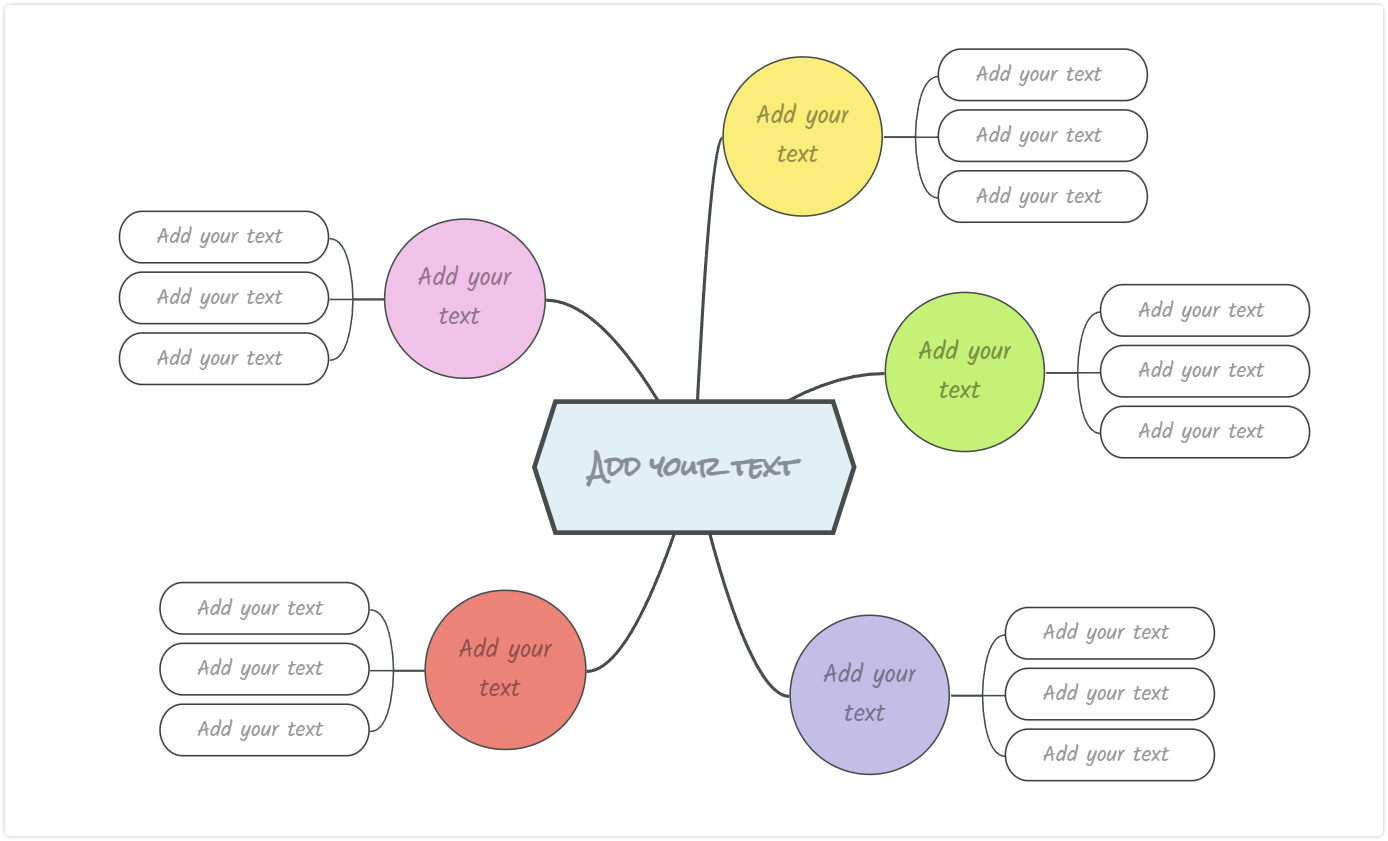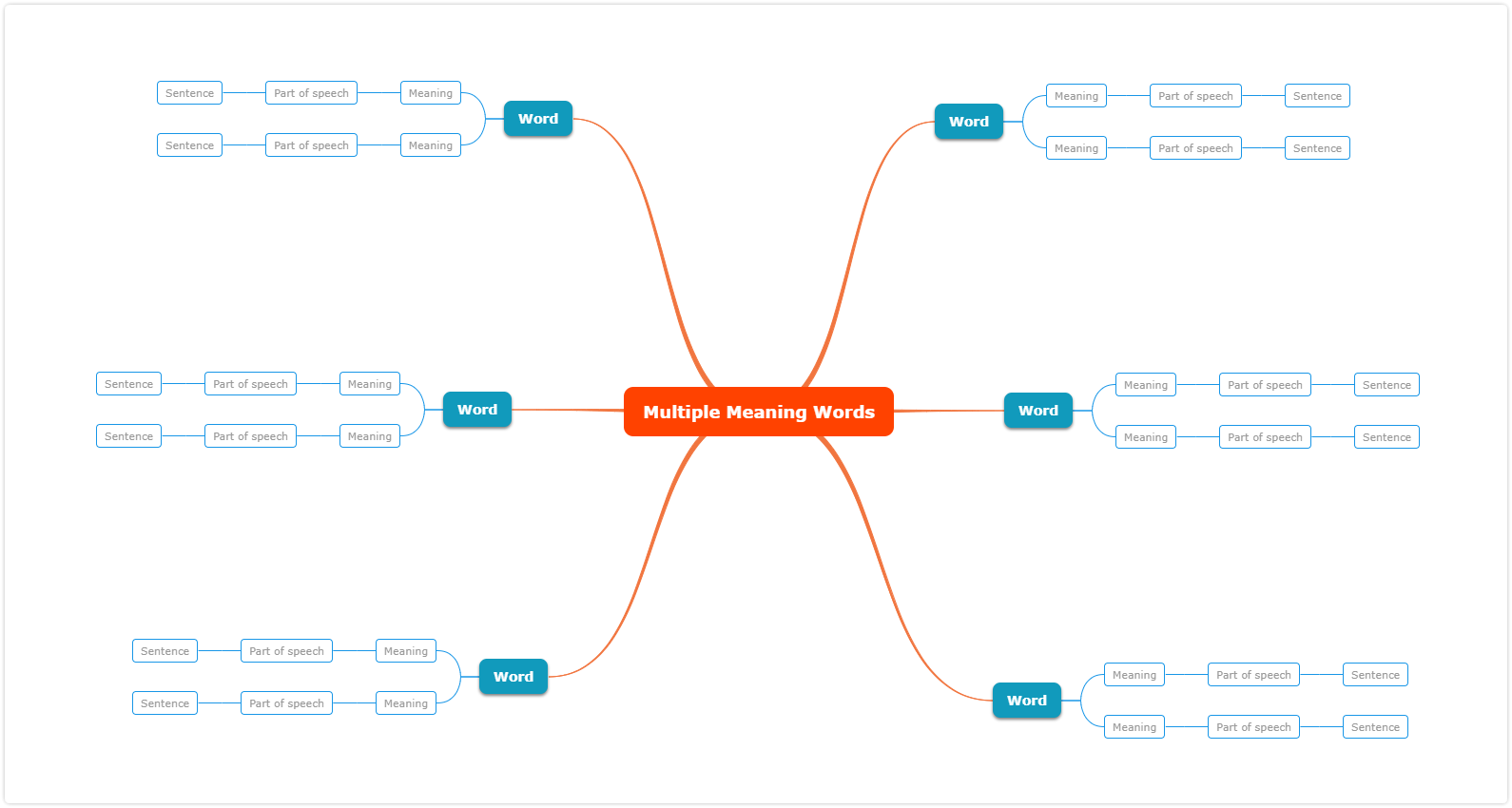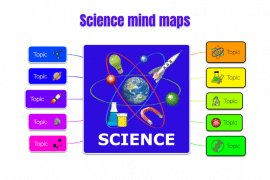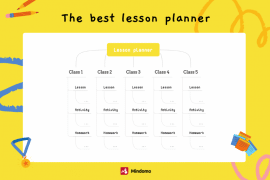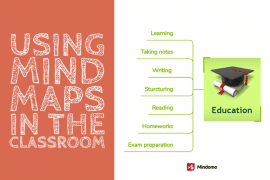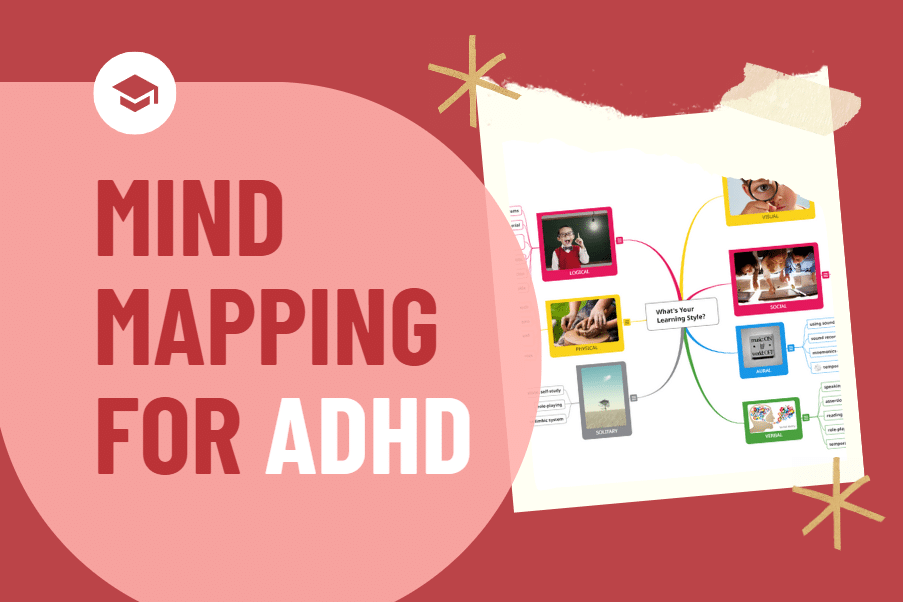
Attention Deficit Hyperactivity Disorder, more commonly known as ADHD, is a prevalent condition that affects millions of individuals worldwide, both in childhood and into adulthood. More than 8 million adults in the US are living with ADHD.
ADHD can cause difficulties with concentration, impulsivity, and managing tasks, making it difficult for people to stay organized and on-task.
However, there is a powerful tool that can help those with ADHD maintain focus and productivity: mind mapping. What is this technique? What are the most common mind map uses? And most importantly, how do you use mind mapping to find focus and help with ADHD?
What is Mind Mapping?
The mind mapping process is used to visually organize information by connecting related ideas in the form of a web or map. It is a powerful tool in professional life that encourages brainstorming and the generation of new ideas.
Mind mapping helps to break down large amounts of information into manageable chunks, ensuring that users don’t feel overwhelmed. It serves as a brilliant study tool, helping to create and clarify the connections between different pieces of information and making it easier to remember key points.
By providing a ‘big picture’ view of a subject, mind maps can help individuals see how different ideas relate to one another and how various pieces of information fit together. This makes it easier to comprehend the overall idea or theme and to recall details when necessary
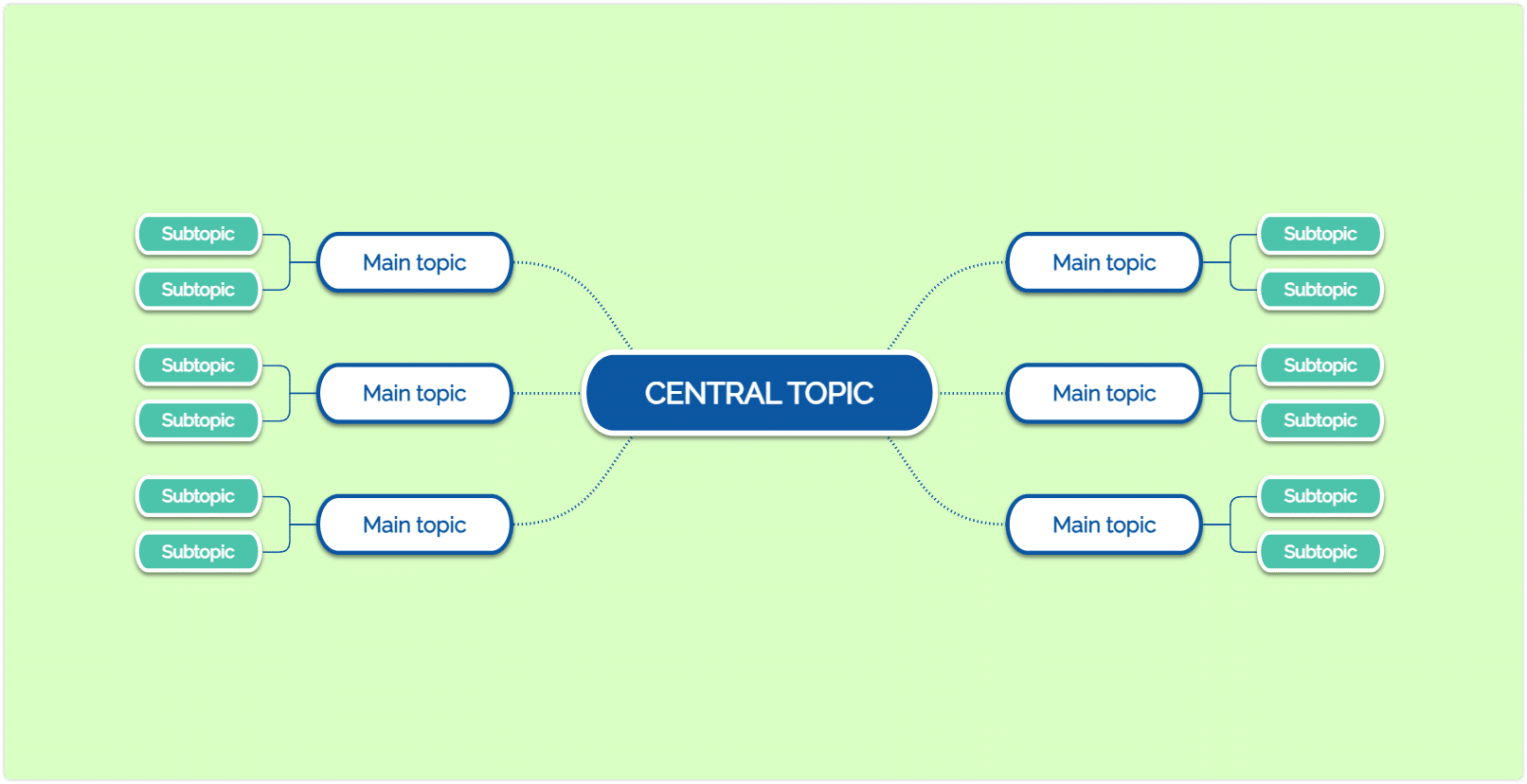
Do Mind Maps Work For ADHD?
Mind mapping as assistive technology: For those with ADHD, mind mapping offers an innovative way to store and organize information. Since it is a visual technique that requires color, drawings, and symbols to convey meaning, it can be more engaging than simply jotting down facts in a linear fashion.
The process of creating these maps can also give users the opportunity to “unwind” – something that is important for those living with ADHD.
Using an ADHD mind map is also an effective tool to help users understand and remember large amounts of information, which can be especially helpful for those who have difficulty concentrating or staying on task.
The technique can help break down complex tasks into easy-to-understand parts, so it’s easier to manage them. This visual representation can also help reveal patterns and connections that may have been previously unseen, allowing users to problem-solve more efficiently.
Mind Mapping vs. Paper-Based Note-taking
When it comes to staying organized and productive, paper-based note-taking is a tried and true method. But for those living with ADHD, mind mapping is a must have study tool.
Unlike traditional note-taking, where everything is written in a linear fashion, mind maps offer the opportunity to separate ideas into different branches. This helps users visualize the relationship between ideas and better understand the material.
Additionally, mind maps for note-taking are much less intimidating than a blank sheet of paper – they allow users to fill in little parts at a time and build their map until completion. You can edit, modify, or rearrange the map at any time, which helps to encourage brainstorming and creativity. Read more about how can you create effective notes using mind maps.
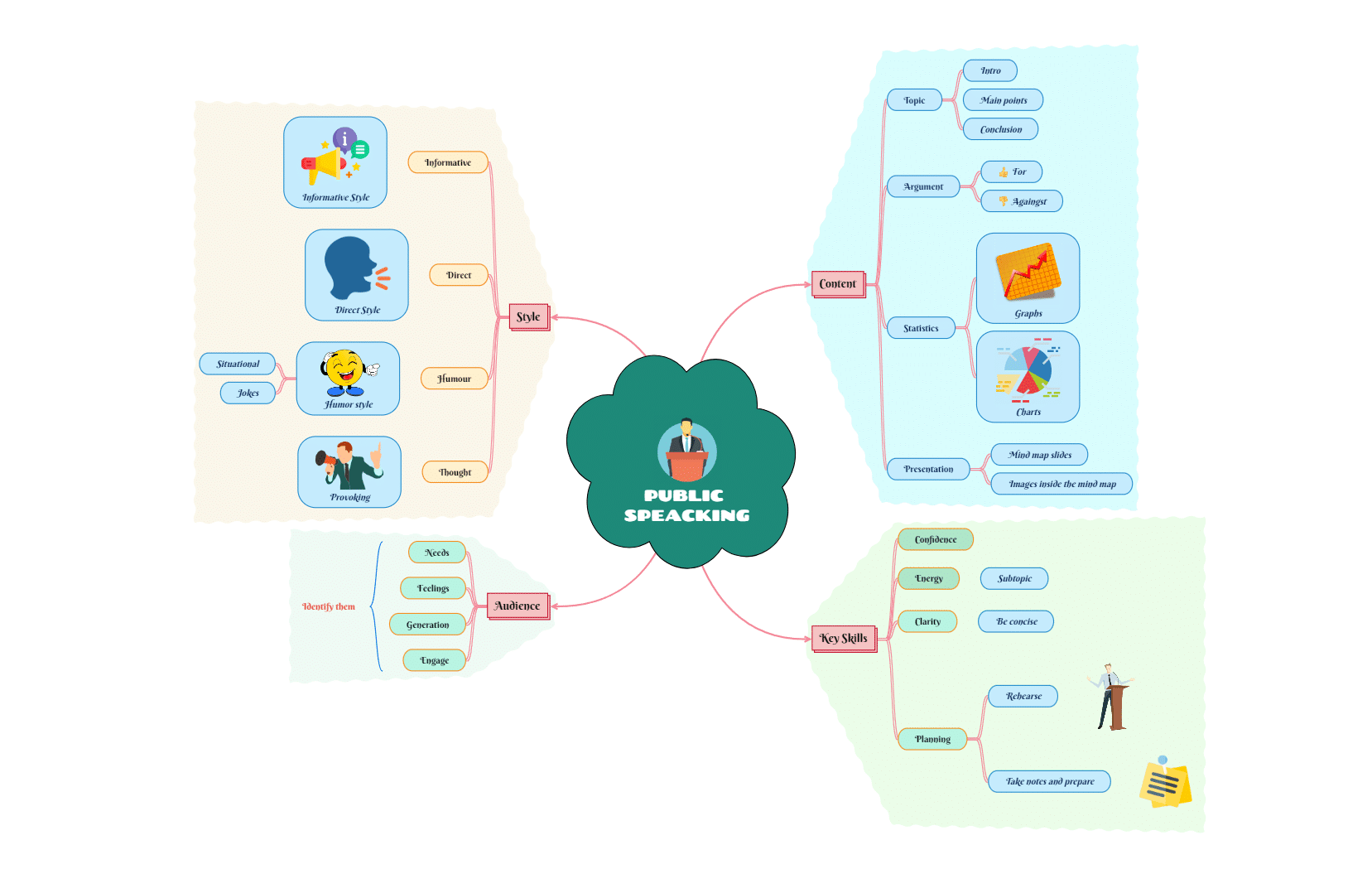
The Benefits of Mind Mapping for ADHD
There are numerous mind-mapping benefits for individuals with ADHD are numerous. Here are a few key ones:
Organization of Thoughts: Mind maps help people with ADHD visually organize thoughts and ideas, making it easier to connect information and related thoughts. Mind mapping brings order to ideas, lists, or complex topics.
Increased Comprehension and Retention: Visual representation increases comprehension and retention. Images are processed and understood faster than words, making it easier to recall information. For ADHD students, this is an invaluable way to learn new topics.
Encourages creativity: Mind mapping can help with creative thinking, allowing users to free flow their thoughts and ideas in a unique way. This can help improve self-esteem and boost motivation for those living with ADHD.
Improvement in Metacognitive Skills: Research has shown that mind mapping can improve the ability to inhibit responses in children with ADHD.
Flexibility: The mind-map technique allows you to follow your thoughts in whatever leaping, meandering way your mind works instead of having to force your thoughts into a linear pattern
How Do You Use Mind Mapping To Help With ADHD?
To get the most out of mind mapping, it’s important to follow a few simple steps:
Start with a central topic or one idea– this will be the basis for your mind map. For example, adults may start with a central theme of “things to do,” which will include all the things they instead to complete during the day in a visual way.
Fill in all the information related to your main topic, including facts, ideas, and links.
Draw lines or arrows between related items and add color, images, and icons.
Use templates to help get started – there are many mind-mapping software programs that offer premade templates that you can customize. Just a few examples of great templates include Mindomo’s pastel globes template and multiple meaning words.
Have fun! The more creative you are, the more successful your mind map will be.
What App Helps with ADHD?
When it comes to choosing a mind map software, Mindomo stands out as the most suitable option. Mindomo is a great tool that allows users to create mind maps complete with images, colors, and connections, catering to the visual thinking majority of those with ADHD.
It’s not just a diagramming tool; it’s a platform that helps users organize information visually, aiding in comprehension, retention, and overall productivity.
Try Mindomo now to experience the full power of this amazing mind map tool! With its advanced features, Mindomo is one of the best mind-mapping tools out there for both student and adult ADHD.
Wrapping It Up
In conclusion, mind mapping serves as a powerful tool for comprehending how one idea relates to another, fostering broader thinking and encouraging creativity. By starting with an appropriate topic and branching out into related subtopics, it allows us to visually organize our thoughts and ideas in a meaningful way.
This not only aids in information retention but also sparks innovative thinking and problem-solving skills. Mind mapping, therefore, is not just a method of note-taking but a catalyst for creative thinking and a valuable skill in both personal and professional life.
Learn more details about mind-mapping techniques here and try Mindomo now.
Keep it smart, simple, and creative!
The Mindomo Team

